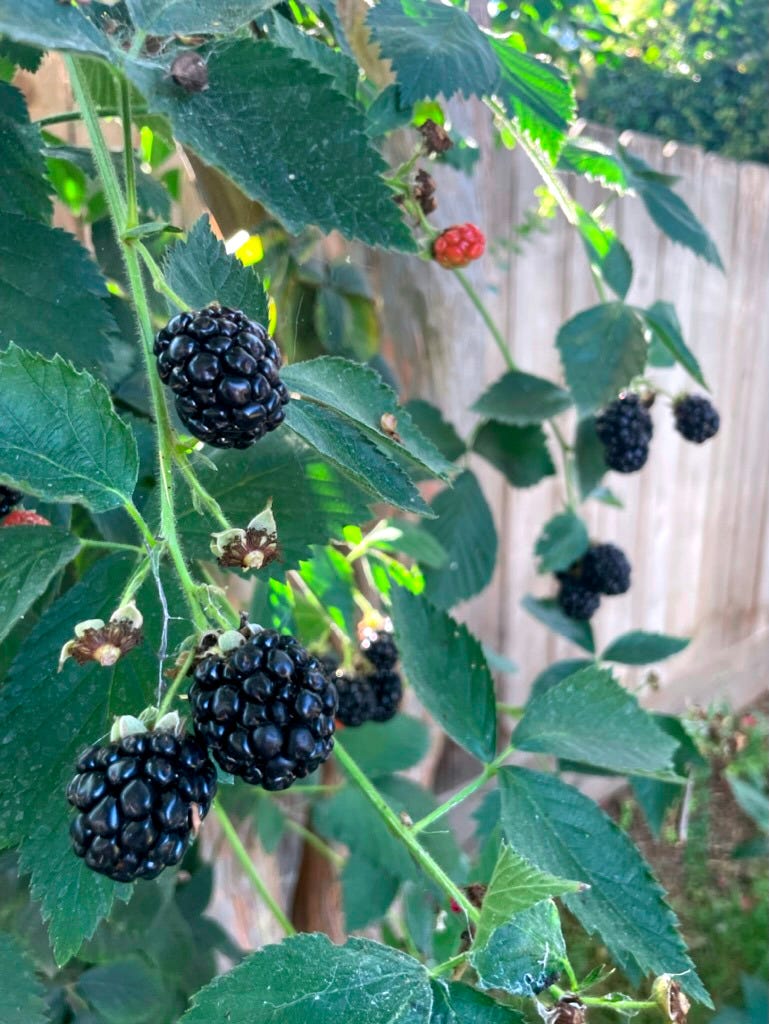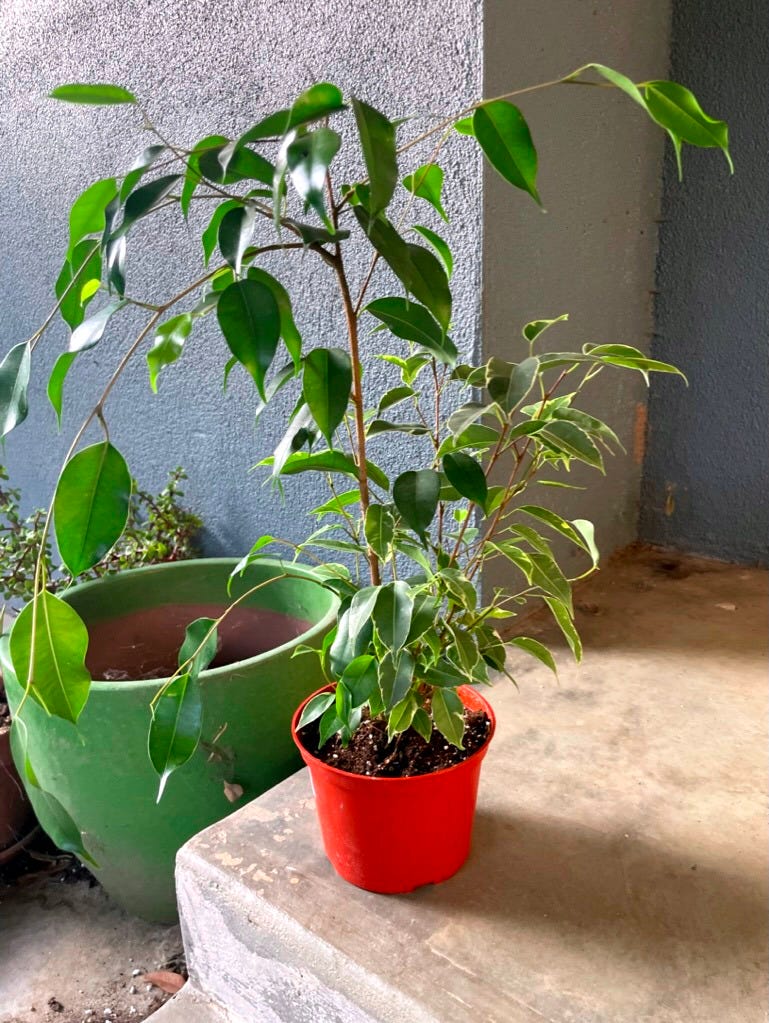The Unexpected Therapy: How a Tomato Plant Changed My Bipolar Recovery
Grow healthy food, improve your environment, and build real community.
View The Bipolar Path Substack
For Courses from The Bipolar Path
When life with bipolar disorder feels unpredictable or out of control, gardening can offer something grounding and healing—a way to reconnect with nature, seasonal cycles, and purpose. It’s not just about growing food or flowers. It’s about rebuilding your confidence your trust in yourself and your surroundings, one small step at a time.
Getting outside and spending time in the sun helps regulate sleep patterns, boosts vitamin D, and lifts mood. But the real gift of gardening is how it teaches you patience, presence, and resilience—qualities that help you stay balanced through the highs and lows of bipolar disorder.
How I started: Small success overtime build.
When we moved back from UC Santa Cruz, I had this wild dream of turning the house i was renting yard was a giant food garden. I had zero experience—I’d never taken care of a plant in my life. I shared the dream with a mentor, and he said, “Start with one box. Get good at keeping just one box of plants alive. Then grow from there.”
So I bought two tomato plants from Kmart in July. Too late in the season. They never turned red. But around Christmas, my future wife made me fried green tomatoes, and they were delicious. That moment hooked me. I didn’t know anything yet, but I kept those tomato plants alive. That was enough to keep going.
In the fall, we planted lettuce. It thrived. I started building raised beds, planting herbs, installing a drip watering system, learned composting. I even built a small greenhouse. Gardening became part of how I learned to care—really care—for something living outside myself.
As life evolved—getting married, buying a home, becoming a parent—I simplified my garden. These days, I mostly care for fruit trees and herbs. But the rhythm of the garden remains a core part of how I care for myself.
Healing, One Season at a Time
Spring comes and our peach tree blossoms. Aloe, lavender, and sage bloom. It’s beautiful. It reminds me that no matter how chaotic things get inside my head, there’s a cycle I can return to. A place to ground a place where growth is always possible.
Gardening helped me build a daily routine—watering, checking on growth, pick fruit, adjusting with the seasons. It gave me a reason to go outside, get sunshine, and move my body. Eating the fruits and veggies I grew got me into cooking, which helped improve my health.
Now, I have so much fruit I give it away—to friends, neighbors, anyone who stops by. That generosity builds community. There’s something deeply fulfilling about offering something you grew with your own hands. And I never use chemicals—my garden is all-natural. You can’t buy fruit that tastes as good as mine.
Before gardening, I often consumed information without taking action. But the garden taught me how to act, slowly and intentionally. It taught me to take what I learned and apply it. It one step at a time.
Start Small—Like Everything on The Bipolar Path
You don’t need a big backyard or experience to begin. You can grow something in a pot, on a windowsill, or in a small raised bed. The act of keeping something alive—learning how much to water it, noticing what it needs—builds connection and confidence.
My first real garden bed was dug with the help of a friend. The next year I planted two more beds, then started fruit trees. Each small win built momentum. Just like improving your mental health. You start where you are. You build from there.
There’s a recovery saying I once heard:
“First, keep a plant alive.
Then take care of an animal.
Then have a relationship with a person.”
It’s not just about caretaking. It’s building skills and learning to trust yourself again.
Why Gardening Supports Our Wellness
Let’s dig into why caring for plants can support your mental health:
Sunlight exposure helps reset your circadian rhythms and increases vitamin D—both crucial for mood regulation.
Time in nature reduces cortisol, the body’s stress hormone.
Sensory experiences—touching soil, smelling herbs, seeing growth—ground you in the present.
Consistency builds confidence. Watering, pruning, and tending your garden creates healthy structure and rhythm.
Watching something grow under your care rebuilds self-trust and shows that progress is possible.
Small victories—like a blooming flower or ripe tomato—can give you real joy and a sense of accomplishment.
Gardening slows things down. It quiets racing thoughts and invites mindfulness.
Community gardens offer support and connection. Or keep it solo for peace and reflection.
Created a beautiful place to sit
How to Start Gardening for Mental Health
You don’t need to know everything or do it perfectly. Just start anything.
Start Where You Are
No yard? Use a balcony, porch, or windowsill.
Indoors? Try houseplants or herbs like basil and mint.
Growing food is intimidating . Start with succulents, flowers, or low-maintenance greens.
Keep It Simple
Try these beginner-friendly options:
Herbs: Basil, thyme, mint
Veggies: Lettuce, cherry tomatoes, radishes
Flowers: Marigolds, zinnias, sunflowers
Build Habits and Rituals
Schedule a regular check-in with your garden.
Let it be part of your wellness routine—like brushing your teeth or taking medication.
Let Gardening build your health
Gardening isn’t just a hobby, it's a connection to the earth, it's a metaphor for recovery. Each seed is a reminder: you don’t have to rush. With steady care, something beautiful will bloom.
Whether you’re in a depressive dip or feeling the buzz of hypomania, gardening offers a middle path—something grounded, stable, and real.
My advice is to start, if your plant dies, try again. Learn for the experience and grow!
Start small. Keep showing up.
Let your recovery be like your garden—rooted, tended, and always growing.
Thank you for walking this path with me.
If your feeling suicidal please call 988 and reach out to a friend or family member. This is an educational blog post, it is not therapy. Please seek the counsel of mental health professionals.
We'd love to hear from you:
Where are you on The Bipolar Path? What helped you move forward—or what’s keeping you stuck? We appreciate any feedback on this Substack. Please share, comment or subscribe
—we read and responded to every message.





